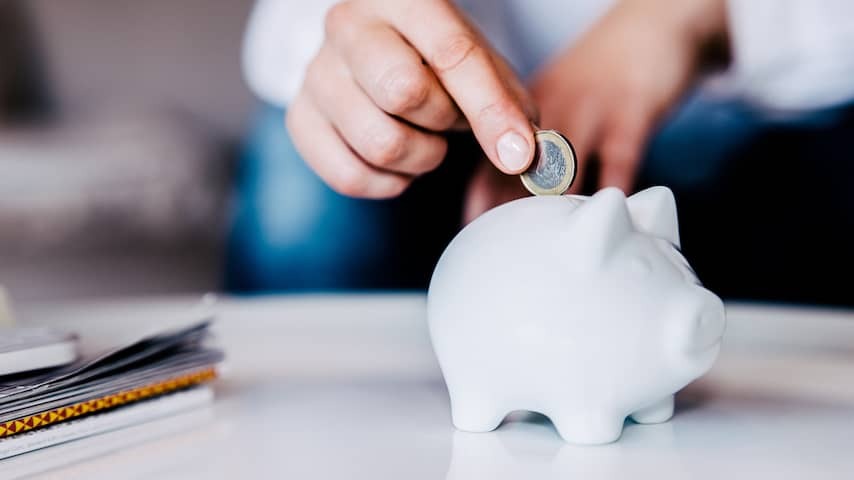
For people with a hole in their hand, for whom the month always lasts just a little too long, and for those who have more difficulty making ends meet due to the more expensive groceries: NU.nl asked two experts how to build up a savings pot.
A third of households have difficulty making ends meet, says Karin Radstaak, spokesperson for Nibud. “A lot depends on behavior. How do you deal with money, what do you spend it on, and how do you make sure you have something to fall back on?”
Because that is important, Radstaak knows. “Suppose your refrigerator suddenly breaks down or you have less work for a while, which means you earn less, then a pot can ensure that you don’t immediately get into trouble.”
If you have a regular income, she recommends setting aside a specific amount on the day it comes in. “So also assume a lower amount to get through the month.”
Nibud advises saving about 10 percent of your income. “That sounds like a lot, and it is. If that really doesn’t work, it can certainly be a little less. But we know from research that you spend an average of 10 percent of your annual income on things in and around the house that need to be repaired.”
Better overview is important
The most important thing is to get a better overview of where you spend your money, emphasizes budget coach Carolien Vos from Budgetbuddy. “Very often the money disappears without people realizing exactly how it happened. I hear them blaming the expensive groceries, but it’s mainly in loose expenses.”
For a better overall picture, it can help to review your bank statements up to three months back. “I often see that people are shocked when they add up all those loose amounts.”
If you want to set aside more money, you have to cut back somewhere. Radstaak: “For example, are there subscriptions that you no longer use or are you stuck with an expensive phone subscription and could that be a little less?”
Divide it into pots
In addition to a better overview, it can also be useful to make an annual budget, Vos advises. “By looking ahead not just a week or a month, but a whole year, you know better what’s coming when and you won’t be shocked, for example, by the annual municipal tax.”
Dividing your savings account into pots can also be recommended by Radstaak. “That gives you a clear goal. It can help if you know you are saving for a new laptop or a vacation. Especially because you can keep track of how far you are.”
Ultimately, according to Vos, it’s about discipline. “Our behavior and habits are a blind spot,” she says. “I see that people are often still too optimistic and think: oh, that’s still possible. Or they have a tendency to justify certain expenses. But dealing with money better is a matter of making choices and being willing to stick to them.”
Set aside holiday pay immediately
If a large amount of money comes in at once, such as your thirteenth month or holiday pay, it is best to set it aside immediately, Radstaak advises. “Otherwise it will be spent unnoticed on other things. And that way you can build up a small buffer in one go.”
She also recommends the BufferBerekenaar from Nibud. “With it you can calculate how much money you should have in reserve. Are you shocked by the high amount? Know that the amount is everything you might need in a year, but won’t always spend immediately.”
And if you have money problems, you don’t have to be ashamed. Radstaak: “Especially in these kinds of times, that’s not necessary at all. It can actually help to ask for tips in your own environment.”